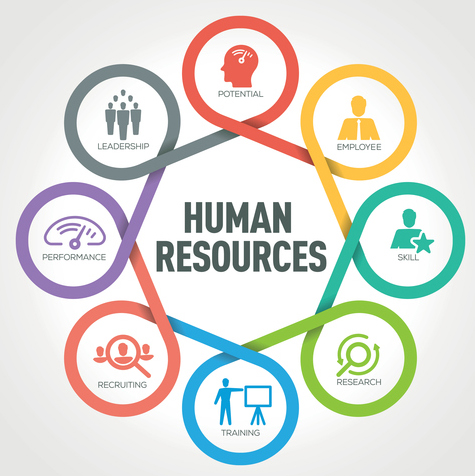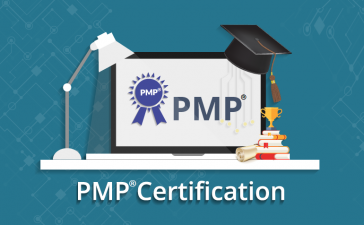The dynamics of the business environment are constantly altering, and the world is increasingly moving to the world of VUCA which is very unpredictable. VUCA, which stands for Volatility, Uncertainty, Complexity and Ambiguity, is a deep undercurrent that will shake up industries and organizations. As an HR Leader, one will be expected to help organizations by leading and navigating in the VUCA scenario. Survival in this highly competitive scenario will highly depend on the agility to respond to the changes and adaptability of the firms. Unique circumstances will challenge the organizational values. An HR Leader must have a clear vision to lead this fight make the right choices for the present as well as the future of the firm and be the keeper of the corporate values.
HR Challenges at VUCA:
Volatility:
Reliability is now a thing of the past. HR managers now must deal with more volatility, wider fluctuations, and faster transitions. Unprecedented levels of technological modernization led to instability. Employees are moving from permanent to contract positions. HR professionals are constantly reshaping their capabilities as organizations prepare to respond. Organizational Development is becoming more and more important and should not be left to consultants outside the company. You need to create an internal OD department to keep up with the constant demand for change.
Uncertainty:
The unpredictability of business models increases the uncertainty in situations in non-linear and asymmetric ways. The risk for these manufacturing organizations is that you can change one thing and it can change everything. This is an unprecedented time and there is no strategic development plan. Critical thinking and flexibility are required in the HR department to align business models at the departmental level. One size doesn’t fit everyone. This is particularly problematic as it requires maintaining standards within traditional aspects of the HR function, but introducing new flexibility at all levels of HR.
Complexity:
The technological simplicity of connecting the people everywhere in the world has created more interdependencies and feedback loops than ever before. Get involved with the people in your firm. In these multi-layer networks, behavior can lead to unpredictable and unintended consequences, and the impact of these measures creates complexity. Coordinate and strengthen communication with HR. The internal communication platform should be more important and consistent according to the culture initiative. HR has a huge responsibility here.
Ambiguity:
The unknown or inexactness increases ambiguity. Where there is no precedent, it becomes more difficult to obtain clarity and consent. The demand for constant innovation leads to ambiguous situations and times. The Human Resources department should help “clean up” this turbid water.
Check out these courses
- HR Social Compliance Course
- HR Psychometric Test Course
- HR Social Compliance Course
- HR Generalist Course
- HR Analytics Course
ROLE OF HR IN TODAY’S VUCA WORLD:
Dave Ulrich, Wayne Brockbank, David & Mike Ulrich has developed an HR competency model. This is such an awesome and easy to understand model to understand the role of HR in today’s VUCA world.
HR must play a role of:
Delivery enablers
which implies its role as a Technology Integrator, Compliance driver and enabling the use of people Analytics to take sound and well-informed decisions.
Organizational Enablers
HR plays an important role as a Culture and Change Champion, enabler of employee wellbeing through Financial and Non-financial rewards and Human capital Curator leading to individual and leadership development/ building high performance work culture.
As a Core driver
HR plays a role as a strategic partner enabling the business to meet its objectives through HR interventions, being a trusted advisor and managing tensions inherent in the business.

NAVIGATING THROUGH VUCA WORLD
CHARACTERISTICS OF AN EFFECTIVE HR DEPARTMENT: –
- Employee Practices – This component of the HR department focuses on the extent to which an organization uses good HR practices to manage its employees. In a recent study, we asked how to drive high performance and commitment, such as pay-for-performance, end-to-end training, performance reviews, pay higher than competitors and employee engagement in decision making.
- Practicing Alignment – We know that HR departments develop and implement various HR practices such as recruitment/HR. select., rewards and benefits, employee engagement, learning and development, diversity, equity and inclusion, and performance management. Does this specialization show the extent to which these practices aim to support and develop key strategic competencies?
- Information and Analysis – The amount of information is growing exponentially, and we all know that businesses must find ways to analyze that information to make effective decisions. Thus, this attribute represents the degree to which a department creates databases, applies analytics.
- Support function – As mentioned in the previous article, we view organizational capabilities as the combination of people, systems, and processes that enable a company to do a better job than its competitors. These characteristics of the HR department indicate how well the HR department supports the creation of the competencies the organization needs.
- Stakeholder Value – Today’s organizations know they must meet the needs and requirements of many internal and external stakeholders. This dimension determines the extent to which a function develops and provides ways to add value to customers, investors, line managers.
- Trust in HR – In the past, in HRCS, trust in the HR function has been a significant driver of business results. This refers to the degree to which a function earns the trust of line management, earns the trust of employees, protects employees, and holds line managers accountable.
- Human Trust – The final characteristic is the degree to which a company’s employees rely on HR to play a critical role in strategic activities such as business strategy formulation, strategy execution, restructuring, and cultural change.
- Three aspects of business capabilities that represent the intersection between HRs and Business:
- NAVIGATING IMPACT OF HR
- HR’s work contributes to as much as 25% of an organization’s results according to the latest excellent research published by THE RBL GROUP.
- HR partners must come together with the rest of the organization to align and deliver on the few and critical capabilities that provide competitive advantage.
- The HR organization’s effectiveness: especially how HR’s practices and policies build Human Capability or help Employees to elevate their results and to improve their experience and engagement.
- HR Competencies: The importance of the competencies required to position HR work in the context of the business and shape actions that build business performance.
Key Findings from the report:
| HR Impact on Business Results | Business Results*(N=1013) |
| HR Competencies | 3.50% |
| HR Department | 48.20% |
| Business Capabilities | 48.30% |
| Overall Variance Explained | 25% |
Researchers from The RBL Group demonstrate that of all the variables (business strategy, economic conditions, direct competitors, products, customer preferences, etc.) that influence a given organization’s results, HR work can explain over 25% of the total variation in business results among more than 1,000 Organizations included in the study from around the globe.
References:
1) https://www.rbl.net/hrcs-round-8
2) https://www.vuca-world.org/











Your planing on this HR strategy planning is so good . Their study material is so great. It was like easy to understand . I would like to suggest you also learn for this blog. Who are interested in this topic.
Hi I am Rakul, I like your describing points on this blog. this is best idea for HR Strateg Planing .Completely this is best solution for our future . I would like to recommended you , If you are interested for learning this Hr strategy planning , So you can watch this blog.